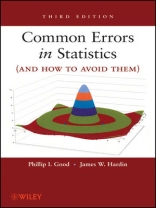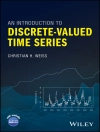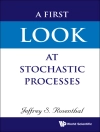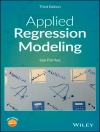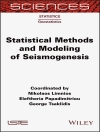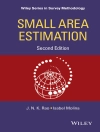Praise for the Second Edition
‘All statistics students and teachers will find in this book a
friendly and intelligentguide to . . . applied statistics in
practice.’
–Journal of Applied Statistics
‘. . . a very engaging and valuable book for all who use
statistics in any setting.’
–CHOICE
‘. . . a concise guide to the basics of statistics, replete with
examples . . . a valuablereference for more advanced statisticians
as well.’
–MAA Reviews
Now in its Third Edition, the highly readable Common
Errors in Statistics (and How to Avoid Them) continues to serve
as a thorough and straightforward discussion of basic statistical
methods, presentations, approaches, and modeling techniques.
Further enriched with new examples and counterexamples from the
latest research as well as added coverage of relevant topics, this
new edition of the benchmark book addresses popular mistakes often
made in data collection and provides an indispensable guide to
accurate statistical analysis and reporting. The authors’ emphasis
on careful practice, combined with a focus on the development of
solutions, reveals the true value of statistics when applied
correctly in any area of research.
The Third Edition has been considerably expanded and
revised to include:
* A new chapter on data quality assessment
* A new chapter on correlated data
* An expanded chapter on data analysis covering categorical and
ordinal data, continuous measurements, and time-to-event data,
including sections on factorial and crossover designs
* Revamped exercises with a stronger emphasis on solutions
* An extended chapter on report preparation
* New sections on factor analysis as well as Poisson and negative
binomial regression
Providing valuable, up-to-date information in the same
user-friendly format as its predecessor, Common Errors in
Statistics (and How to Avoid Them), Third Edition is an
excellent book for students and professionals in industry,
government, medicine, and the social sciences.
Tabella dei contenuti
PREFACE xi
PART I FOUNDATIONS 1
1 Sources of Error 3
Prescription, 4
Fundamental Concepts, 5
Ad Hoc, Post Hoc Hypotheses, 7
To Learn More, 11
2 Hypotheses: The Why of Your Research 13
Prescription, 13
What is a Hypothesis?, 14
Found Data, 16
Null Hypothesis, 16
Neyman-Pearson Theory, 17
Deduction and Induction, 21
Losses, 22
Decisions, 23
To Learn More, 25
3 Collecting Data 27
Preparation, 27
Response Variables, 28
Determining Sample Size, 32
Sequential Sampling, 36
One-Tail or Two?, 37
Fundamental Assumptions, 40
Experimental Design, 41
Four Guidelines, 43
Are Experiments Really Necessary?, 46
To Learn More, 47
PART II STATISTICAL ANALYSIS 49
4 Data Quality Assessment 51
Objectives, 52
Review the Sampling Design, 52
Data Review, 53
The Four-Plot, 55
To Learn More, 55
5 Estimation 57
Prevention, 57
Desirable and Not-So-Desirable Estimators, 57
Interval Estimates, 61
Improved Results, 65
Summary, 66
To Learn More, 66
6 Testing Hypotheses: Choosing a Test Statistic 67
First Steps, 68
Test Assumptions, 70
Binomial Trials, 71
Categorical Data, 72
Time-to-Event Data (Survival Analysis), 73
Comparing the Means of Two Sets of Measurements, 76
Comparing Variances, 85
Comparing the Means of k Samples, 89
Subjective Data, 91
Independence Versus Correlation, 91
Higher-Order Experimental Designs, 92
Inferior Tests, 96
Multiple Tests, 97
Before You Draw Conclusions, 97
Summary, 99
To Learn More, 99
7 Miscellaneous Statistical Procedures 101
Bootstrap, 102
Bayesian Methodology, 103
Meta-Analysis, 110
Permutation Tests, 112
To Learn More, 113
PART III REPORTS 115
8 Reporting Your Results 117
Fundamentals, 117
Descriptive Statistics, 122
Standard Error, 127
p-Values, 130
Confidence Intervals, 131
Recognizing and Reporting Biases, 133
Reporting Power, 135
Drawing Conclusions, 135
Summary, 136
To Learn More, 136
9 Interpreting Reports 139
With a Grain of Salt, 139
The Analysis, 141
Rates and Percentages, 145
Interpreting Computer Printouts, 146
To Learn More, 146
10 Graphics 149
The Soccer Data, 150
Five Rules for Avoiding Bad Graphics, 150
One Rule for Correct Usage of Three-Dimensional Graphics, 159
The Misunderstood and Maligned Pie Chart, 161
Two Rules for Effective Display of Subgroup Information, 162
Two Rules for Text Elements in Graphics, 166
Multidimensional Displays, 167
Choosing Graphical Displays, 170
Summary, 172
To Learn More, 172
PART IV BUILDING A MODEL 175
11 Univariate Regression 177
Model Selection, 178
Stratification, 183
Estimating Coefficients, 185
Further Considerations, 187
Summary, 191
To Learn More, 192
12 Alternate Methods of Regression 193
Linear Versus Non-Linear Regression, 194
Least Absolute Deviation Regression, 194
Errors-in-Variables Regression, 196
Quantile Regression, 199
The Ecological Fallacy, 201
Nonsense Regression, 202
Summary, 202
To Learn More, 203
13 Multivariable Regression 205
Caveats, 205
Correcting for Confounding Variables, 207
Keep It Simple, 207
Dynamic Models, 208
Factor Analysis, 208
Reporting Your Results, 209
A Conjecture, 211
Decision Trees, 211
Building a Successful Model, 214
To Learn More, 215
14 Modeling Correlated Data 217
Common Sources of Error, 218
Panel Data, 218
Fixed- and Random-Effects Models, 219
Population-Averaged GEEs, 219
Quick Reference for Popular Panel Estimators, 221
To Learn More, 223
15 Validation 225
Objectives, 225
Methods of Validation, 226
Measures of Predictive Success, 229
Long-Term Stability, 231
To Learn More, 231
GLOSSARY, GROUPED BY RELATED BUT DISTINCT TERMS 233
BIBLIOGRAPHY 237
AUTHOR INDEX 259
SUBJECT INDEX 267
Circa l’autore
PHILLIP I. GOOD, Ph D, is Operations Manager of
Statcourse.com, a consulting firm specializing in statistical
solutions for industry. He has published more than thirty scholarly
works, more than six hundred popular articles, and twenty-one
books, including Introduction to Statistics Through Resampling
Methods and R/S-PLUS and Introduction to Statistics Through
Resampling Methods and Microsoft Office Excel, both published
by Wiley.
JAMES W. HARDIN, Ph D, is Research Associate Professor and
Director of the Biostatistics Collaborative Unit at the University
of South Carolina.
